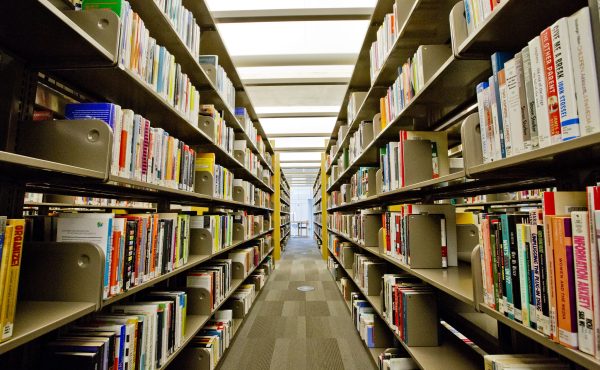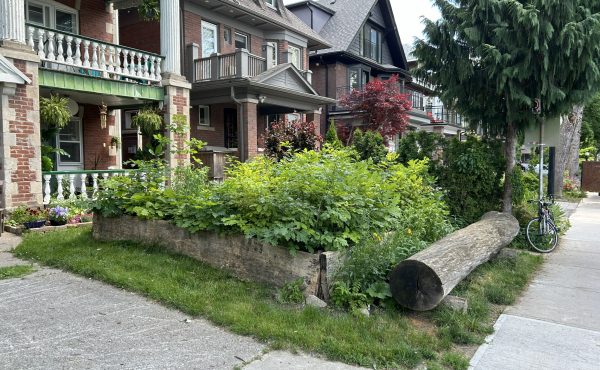Last year I spent a month in Iceland, Denmark, Sweden, and Germany examining how the great cities of those countries tackle urban design, transportation and planning issues. Previously, I’ve also spent time in The Netherlands where I got to experience the quaint and charming city of Utrecht, though it was only for two rain-filled days so I sadly never got to see the scene portrayed in the video above.
What is remarkable about the video is the sheer volume of trips made by bike in the morning rush hour. I got to see similar scenes in Copenhagen and Malmo last year — although I was only armed with a camera I tried to capture the “congestion” of bikes on a busy throughfare.
For cycling advocates here in Toronto, seeing a video like this can be both uplifting and depressing at the same time. While the City makes strides on such things as the downtown bike network and the public bike sharing program, a simple mis-vote can throw the pilot project of the protected University Ave. bike lanes into chaos. And we have to wait another year just to test if this is a good idea while there is ample evidence, as shown above, all over the world.



20 comments
Dunno what point is being made by the video being speeded up though.
The scale of bike facilities in the Netherlands is unbelievable. I took a picture of the bike lot at Nijmegen station a few years back: http://scruss.com/gallery/main.php?g2_itemId=2155
Looking at the video, I notice the lack of the sign pollution Toronto would, with its micro-managing, would require. A single bicycle traffic signal with no signs explaining in the native language explaining what the signal is for (the signal uses a pictogram of a bicycle). The pedestrians do have a single signal at each crossing, but no duplication of traffic signals unless truly required. I can imagine if the same scene is set in Toronto, duplication of signals, signs explaining what this signal is for, a total mess.
At 1:01 – All that place to ride your bike, all those people doing the right thing, stopping for lights, giving right of way, and there will still be that one guy who’s a dick and rides up on the curb. At least it’s only one.
proved the point why we don’t need more bike lanes. They use it – our people don’t.
Sorry Wiley Bob, Torontonians totally use their bike lanes. I was recently with a man who works for the Dutch bike sharing program and was amazed at the amount of cyclists we had compared to any other North American city. And also amazed at the lack of bike lanes to accommodate them.
Now, the areas north of St Clair in the city, bike lanes are used much less but recent bike traffic counts show the cycling rides are up by almost 100% across the inner burbs.
Build them and they will come.
I especially like the rush hour version in the SNOW! See http://www.youtube.com/watch#!v=ZMv3OB6XHvQ for the video.
Anyone else notice how nobody is wearing a helmet?
Also noteworthy is the fact that there are few very private vehicles in that road that intersects the bike path. Lots of buses and trams, only a handful of cars.
The one thing that always hits me the hardest when I see how great the city experience can be, is how slow things seems to progress in Toronto. I may not be so experienced in the workings of Toronto politics but, like Matt said, it’s pretty depressing that we can’t be doing the same.
Look at videos on sites like streetfilms.org. It’s not just Europe that’s making changes, but also many major American cities. I just have a hard time seeing Toronto as ‘world class’ these days. What can we do?
The whole area will be redesigned with more clarity for all modes of transport. See: http://hembrow.blogspot.com/2010/05/cycle-rush-hour-in-spring-in-utrecht.htm
The blue-yellow bikes that you occasionally see in the video are OV-fiets bikes. A national hire scheme where one can rent bikes for the last legg of the commute. http://hembrow.blogspot.com/2010/02/ov-fiets-in-vancouver.html
Emissions-free and quiet traffic that takes up very little land: it’s glorious!
Matt, you mentioned you didn’t get to see this scene yourself because of the rain when you were there. What exactly happens on rainy days? Does transit use spike? Do people carpool? Walk? Delay their trip if not commuting? Where does the traffic go when weather is not conducive to two wheels?
iSky:
When I was there it was rather monsoon-like with only a few people out. I was also only there from mid-afternoon to the next day’s afternoon.
But while in Copenhagen, I only saw a small drop off of riders when it rained.
God forbid anybody leaving a comment should highlight the huge difference in area between copenhagen and toronto as maybe being a factor regarding infrastructure in these respective cities. Comparing apples to oranges is so much fun.
Sam: not sure what you mean in “the huge difference in area between copenhagen and toronto as maybe being a factor regarding infrastructure in these respective cities…”
Do you mean size of city? or just the gap between what they’ve done and what Toronto has accomplished?
my post was meant to show that University bike lane debate is kinda silly about whether the City should even do a pilot project. Of coarse we should try things, and if it doesn’t work on University than maybe somewhere else. But separated bike lanes works, and we know it (as this video shows).
On rainy days most people will still use the bike. http://www.bakfiets-en-meer.nl/2009/02/05/dutch-ride-in-rain-germans-are-sugar/
With the right bike rain isn’t much of a hinderance.
Meanwhile, we’ve been rebuilding Bloor St. in Yorkville for the last three-odd years without planning for bike lanes, though some of us have been fussing about it, even finding that in 1992 that wide portion of Bloor was found to be the best place in the old City for an east-west bike lane. And last election, Kyle Rae even promised Bloor bike lanes. Given how long-lasting decisions about roads are – eg. Spadina not finding room for bike lanes, it’s a travesty that we’re rebuilding this portion of Bloor St. without bike lanes, though some of us have been fussing about it. What’s worse is that the new design is actually wasting!! the space that we need for the easy bike lanes at the new curbs, as there’s a .;8M gap between new curb and new planter – and if we just had managed to push the curbs back .5M, we’d have the easy bike lanes without interfering with the two lanes of car travel. Rebuilding the curb portion of this rebuild won’t be a popular position, but the other option, taking away a lane of motorized travel for bike lanes, is not something we cyclists have been pushing for.
Both progressives and conservatives are on the wrong side of this one – and as an indication of the overall commitment of the City to better biking, even the portion of Bloor that was in the Bike Plan, the Sherbourne over to Church St. part, it has failed to be brought forward.
Sigh.
This is how the ice caps melt.
This video shows the same place in wintertime with snow, and it’s just as crowded. Weather need not be that big of an issue. http://www.youtube.com/watch#!v=ZMv3OB6XHvQ
Mathew, differences referred to have to do with area covered by each city and density (and I’m sure there are others) … there are big differences between Toronto and Copenhagen. Talking about transportation infrastructure of any kind without talking about land-use issues makes little sense. Not that that ever seems to deter people from leaving these issues out of the discussion.
Meanwhile, Montreal police are carrying out their cycling week ritual, handing out helmets and lecturing cyclists on traffic rules. Good to see last week’s carnage is being effectively addressed.